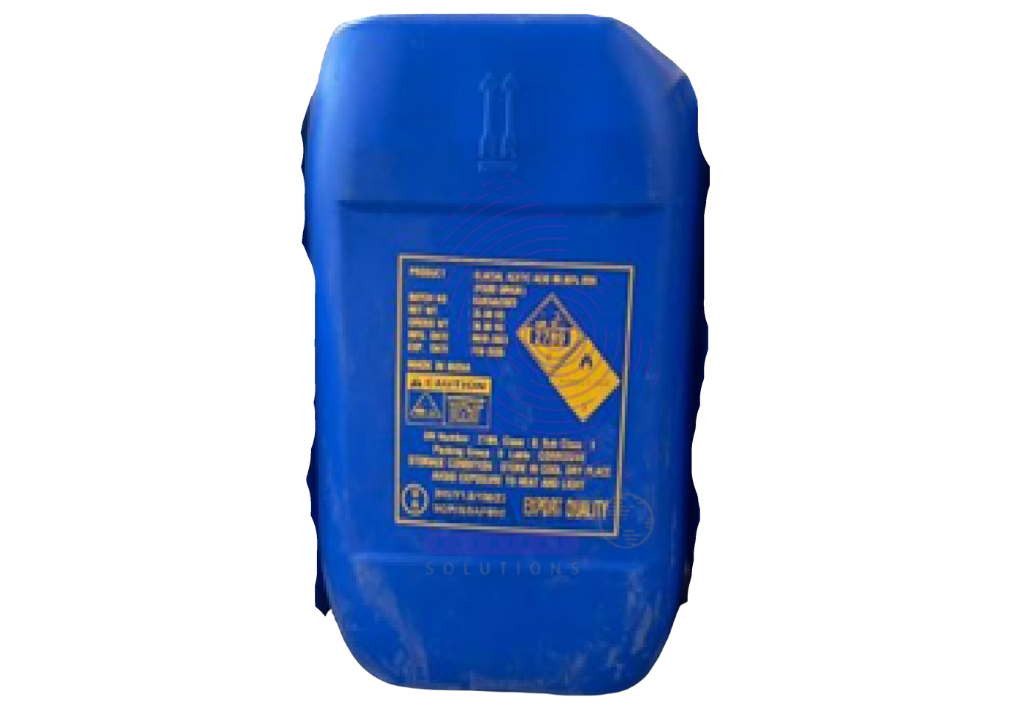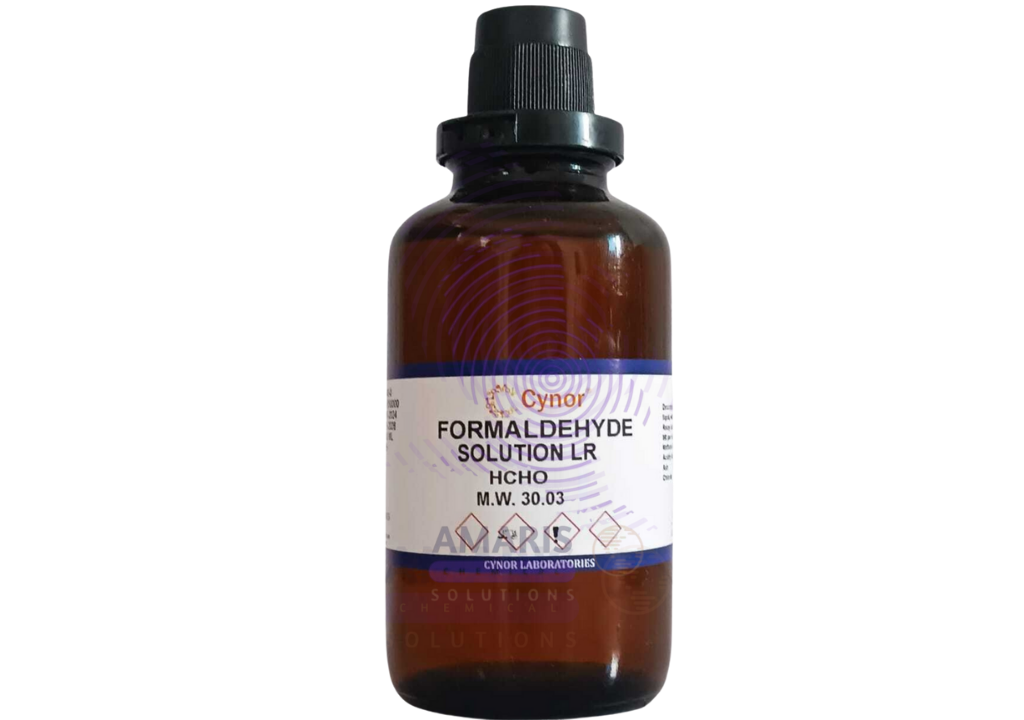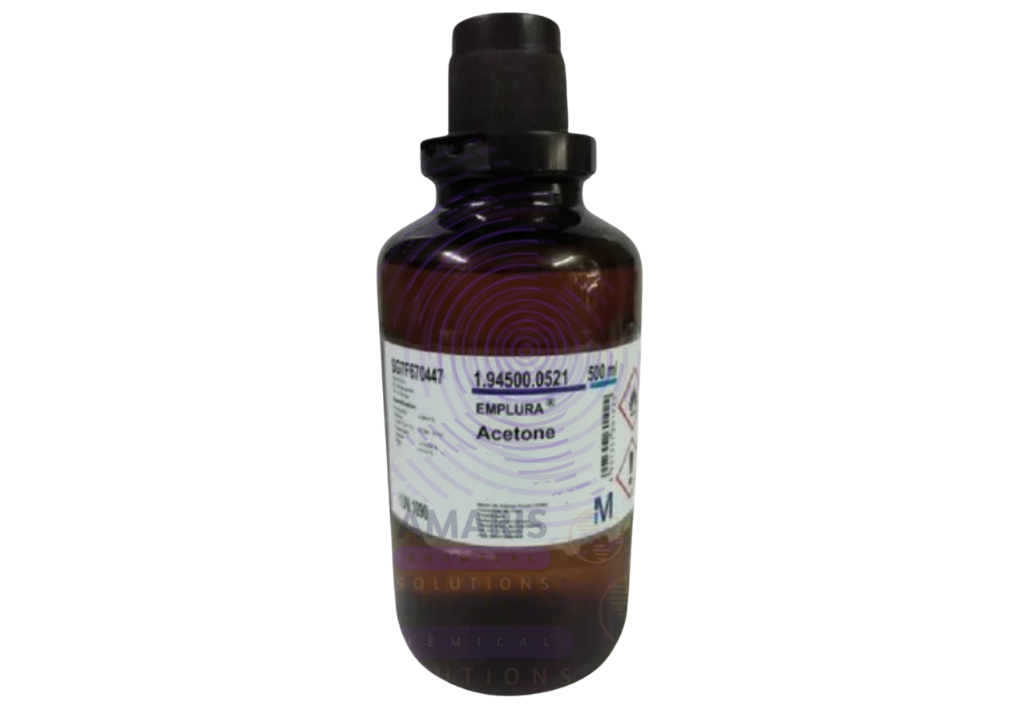🌿 Acetic Acid Technical Grade: The Backbone of Industrial Chemistry and Everyday Manufacturing

Acetic Acid, widely known as ethanoic acid, is one of the most important organic acids in industrial and laboratory chemistry. In its technical grade form, this versatile compound is a key ingredient in countless production processes — from textile finishing and food additives to chemical synthesis and cleaning applications. At Amaris Chemical Solutions, we supply high-quality technical grade Acetic Acid that ensures consistency, reliability, and performance across multiple industries. ⚗️
⚙️ Chemical Overview
- Chemical Name: Acetic Acid (Technical Grade)
- Chemical Formula: CH₃COOH
- Molecular Weight: 60.05 g/mol
- Appearance: Clear, colorless liquid with a strong, pungent vinegar-like odor
- Boiling Point: 118°C
- Melting Point: 16.6°C
- Density: 1.049 g/cm³
- Solubility: Miscible with water, alcohol, and most organic solvents
Technical grade Acetic Acid typically contains 94–99% purity, making it suitable for a wide variety of industrial and non-food applications where analytical or food-grade purity is not required.
🏭 1. Industrial and Manufacturing Applications
Acetic Acid is a cornerstone raw material for the production of numerous chemicals and products used daily.
- Used in the manufacture of vinyl acetate monomer (VAM) — a building block for paints, adhesives, and coatings.
- Plays a critical role in producing acetic anhydride, used in cellulose acetate for films and textiles.
- Serves as an essential reactant in the production of esters, perfumes, and solvents.
- Employed in plastic and rubber industries for surface treatment and cleaning.
- Acts as a pH regulator and process acidifier in various manufacturing lines.
Its ability to dissolve a wide range of organic and inorganic materials makes it a universal chemical in synthesis and processing.
🧴 2. Cleaning and Descaling Agent
Technical grade Acetic Acid is widely used as a powerful cleaning and descaling agent, especially in industrial maintenance:
- Removes lime scale, mineral deposits, and rust from metal and glass surfaces.
- Used in detergent formulations for industrial and institutional cleaning.
- Applied in boiler cleaning, heat exchanger maintenance, and equipment descaling.
- Acts as an eco-friendlier alternative to harsher mineral acids in cleaning applications.
Its mild corrosive action makes it effective yet manageable for routine equipment cleaning in industrial environments.
👗 3. Textile and Leather Processing
In textile and leather industries, Acetic Acid helps balance pH and fix dyes effectively:
- Used in dyeing and printing processes to control acidity.
- Assists in neutralizing alkaline residues after scouring or bleaching.
- Improves color brightness and uniformity during fabric finishing.
- Plays a role in leather tanning and conditioning, enhancing texture and durability.
This acid ensures quality control in color retention and material softness, making it indispensable in fabric and leather processing.
🧪 4. Laboratory and Chemical Synthesis
Though not as pure as analytical or glacial grades, technical grade Acetic Acid still serves effectively in general laboratory and chemical synthesis work:
- Used for acid-base titrations and buffer preparation.
- Serves as a solvent and reagent in organic reactions.
- Aids in sample digestion, extraction, and crystallization.
- Often used for neutralization and cleaning of lab glassware.
Its ready availability and versatility make it a laboratory staple for non-analytical applications.
🚗 5. Other Industrial Uses
Technical Acetic Acid also finds use across a range of sectors:
- In oil and gas, for controlling pH and removing carbonate scales.
- In agriculture, as a weed control agent and soil pH conditioner.
- In construction chemicals, used to modify polymers and adhesives.
- In pulp and paper, it helps in chlorine-free bleaching and fiber processing.
Its broad utility highlights why acetic acid remains one of the most widely produced organic acids worldwide. 🌍
⚠️ Safety and Handling Guidelines
Hazard Class: Corrosive Liquid (UN 2789)
Pictograms: ☣️🔥
Precautions:
- Avoid direct contact — Acetic Acid can cause skin and eye irritation or burns.
- Use chemical-resistant gloves, goggles, and protective clothing.
- Store in tightly sealed containers, away from heat sources and oxidizing materials.
- Always handle in a well-ventilated area to minimize vapor inhalation.
First Aid:
- In case of skin or eye contact, rinse thoroughly with water for several minutes.
- If inhaled, move to fresh air immediately.
- Seek medical attention if irritation persists.
🌱 Environmental and Sustainability Aspects
Acetic Acid is readily biodegradable and poses low environmental risk when used properly.
It breaks down into carbon dioxide and water, making it a sustainable choice compared to stronger mineral acids like hydrochloric or sulfuric acid.
💼 Why Choose Amaris Chemical Solutions
At Amaris Chemical Solutions, our technical grade Acetic Acid meets the quality and purity demands of diverse industries. Whether you’re involved in chemical manufacturing, textile processing, industrial cleaning, or laboratory work, we ensure reliable supply, consistent performance, and safety assurance with every batch.
We don’t just supply chemicals — we provide solutions that optimize your processes and uphold quality standards.


 Preservatives(food)
Preservatives(food) Flavor Enhancers
Flavor Enhancers Acidulants
Acidulants Sweeteners
Sweeteners Antioxidants
Antioxidants Colorants(food)
Colorants(food) Nutraceutical Ingredients (food)
Nutraceutical Ingredients (food) Nutrient Supplements
Nutrient Supplements Emulsifiers
Emulsifiers
 Collectors
Collectors Dust Suppressants
Dust Suppressants Explosives and Blasting Agents
Explosives and Blasting Agents Flocculants and Coagulants
Flocculants and Coagulants Frothers
Frothers Leaching Agents
Leaching Agents pH Modifiers
pH Modifiers Precious Metal Extraction Agents
Precious Metal Extraction Agents
 Antioxidants(plastic)
Antioxidants(plastic) Colorants (Pigments, Dyes)
Colorants (Pigments, Dyes) Fillers and Reinforcements
Fillers and Reinforcements Flame Retardants
Flame Retardants Monomers
Monomers Plasticizers
Plasticizers Polymerization Initiators
Polymerization Initiators Stabilizers (UV, Heat)
Stabilizers (UV, Heat)
 Antifoaming Agents
Antifoaming Agents Chelating Agents
Chelating Agents Coagulants and Flocculants
Coagulants and Flocculants Corrosion Inhibitors
Corrosion Inhibitors Disinfectants and Biocides
Disinfectants and Biocides Oxidizing Agents
Oxidizing Agents pH Adjusters
pH Adjusters Scale Inhibitors( water)
Scale Inhibitors( water)
 Antioxidants(cosmetic)
Antioxidants(cosmetic) Emollients
Emollients Fragrances and Essential Oils
Fragrances and Essential Oils Humectants
Humectants Preservatives
Preservatives Surfactants(cosmetic)
Surfactants(cosmetic) Thickeners
Thickeners UV Filters
UV Filters
 Fertilizers
Fertilizers Soil Conditioners
Soil Conditioners Plant Growth Regulators
Plant Growth Regulators Animal Feed Additives
Animal Feed Additives Biostimulants
Biostimulants Pesticides (Herbicides, Insecticides, Fungicides)
Pesticides (Herbicides, Insecticides, Fungicides)
 Active Pharmaceutical Ingredients (APIs)
Active Pharmaceutical Ingredients (APIs) Excipients
Excipients Solvents(pharmaceutical)
Solvents(pharmaceutical) Antibiotics
Antibiotics Antiseptics and Disinfectants
Antiseptics and Disinfectants Vaccine Adjuvants
Vaccine Adjuvants Nutraceutical Ingredients (pharmaceutical)
Nutraceutical Ingredients (pharmaceutical) Analgesics & Antipyretics
Analgesics & Antipyretics
 Analytical Reagents
Analytical Reagents Solvents(lab)
Solvents(lab) Chromatography Chemicals
Chromatography Chemicals Spectroscopy Reagents
Spectroscopy Reagents microbiology-and-cell-culture-reagents
microbiology-and-cell-culture-reagents Molecular Biology Reagents
Molecular Biology Reagents Biochemical Reagents
Biochemical Reagents Inorganic and Organic Standards
Inorganic and Organic Standards Laboratory Safety Chemicals
Laboratory Safety Chemicals Specialty Laboratory Chemicals(Special Laboratory Equipment)
Specialty Laboratory Chemicals(Special Laboratory Equipment)
 Demulsifiers
Demulsifiers Hydraulic Fracturing Fluids
Hydraulic Fracturing Fluids Scale Inhibitors(oil)
Scale Inhibitors(oil) Surfactants(oil)
Surfactants(oil) Drilling Fluids
Drilling Fluids
 Dyes and Pigments
Dyes and Pigments Bleaching Agents
Bleaching Agents Softening Agents
Softening Agents Finishing Agents
Finishing Agents Antistatic Agents
Antistatic Agents
 Admixtures
Admixtures Waterproofing Agents
Waterproofing Agents Sealants and Adhesives
Sealants and Adhesives Curing Compounds
Curing Compounds Concrete Repair Chemicals
Concrete Repair Chemicals Anti-Corrosion Coatings
Anti-Corrosion Coatings
 Surfactants(cleaning)
Surfactants(cleaning) Builders
Builders Enzymes
Enzymes Solvents (Cleaning)
Solvents (Cleaning) Fragrances
Fragrances
 Electronic Chemicals
Electronic Chemicals Catalysts
Catalysts Lubricants
Lubricants Photographic Chemicals
Photographic Chemicals Refrigerants
Refrigerants Automotive chemicals
Automotive chemicals Pyrotechnic Chemicals
Pyrotechnic Chemicals
 Biodegradable Surfactants
Biodegradable Surfactants Bio-based Solvents
Bio-based Solvents Renewable Polymers
Renewable Polymers Carbon Capture Chemicals
Carbon Capture Chemicals Wastewater Treatment Chemicals
Wastewater Treatment Chemicals
 Pigments
Pigments Solvents(paint)
Solvents(paint) Specialty Coatings
Specialty Coatings Binders/Resins
Binders/Resins Additives
Additives Driers
Driers Anti-Corrosion Agents
Anti-Corrosion Agents Functional Coatings
Functional Coatings Application-Specific Coatings
Application-Specific Coatings
 Fresh Herbs
Fresh Herbs Ground Spices
Ground Spices Whole Spices
Whole Spices Spice Blends
Spice Blends Dried Herbs
Dried Herbs
 Leavening Agents
Leavening Agents Dough Conditioners
Dough Conditioners Flour Treatments
Flour Treatments Fat Replacers
Fat Replacers Decoratives
Decoratives Preservatives(baking)
Preservatives(baking)
 Plasticizers & Softeners
Plasticizers & Softeners Reinforcing Agents
Reinforcing Agents Adhesion Promoters
Adhesion Promoters Vulcanizing Agents
Vulcanizing Agents Antidegradants
Antidegradants Blowing Agents
Blowing Agents Fillers & Extenders
Fillers & Extenders Accelerators & Retarders
Accelerators & Retarders



















